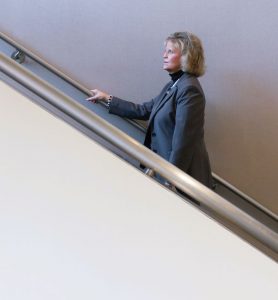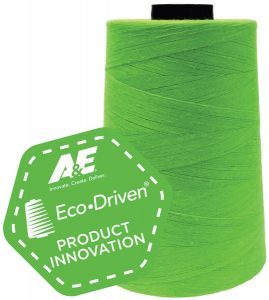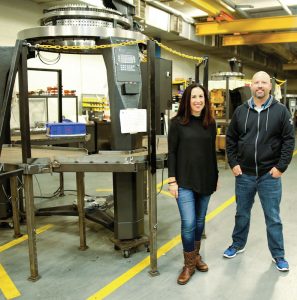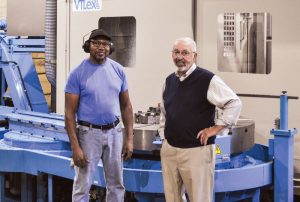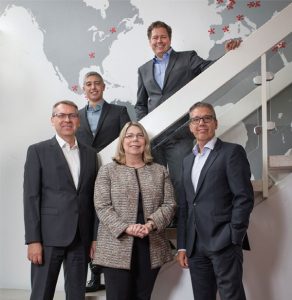Recycling everything from plastic bottles to old fabrics, U.S. textile manufacturers are protecting our environment in innovative ways.
Sustainability is crucial to protecting the earth’s future, and America’s textile industry is doing its part in many ways. From plastic bottles to old fabrics, U.S. textile manufacturers are finding innovative ways to incorporate recycled materials into a broad array of consumer and industrial goods. This aggressive development of sustainable American textiles has created the need for recycling specialists within the domestic industry.
Spartanburg, S.C.-based William Barnet & Son is a manufacturing, recycling and trading company operating sales and manufacturing facilities in the U.S., Europe, Asia and Central America. The company traces its roots to 1898 and specializes in many synthetic post-industrial materials including polyester, nylon and acrylic.
Acquiring raw materials like tire remnants, old airbags and discarded carpet that would otherwise be destined for a landfill, Barnet recycles these used materials into fibers and yarns for textiles for numerous markets, including construction, filtration systems, bedding, furniture, roofing and autos.
Barnet’s newest project is a joint venture with Germany-based Albis Plastic. Albis is a specialist in the design and compounding of plastics used in automotive components in Europe. The company is building a production facility for engineering plastic compounds in Duncan, S.C., where Barnet operates a recycling facility. By colocating, Albis and Barnet plan to collaborate on the manufacturing of advanced plastic compounds. This joint venture is a $14 million investment that will create up to 60 new jobs.
“Our joint venture with Albis is a win-win,” said Chuck Hall, vice president for sales and manufacturing, Barnet. “It enables us to expand our reach into the Southeast’s growing automotive supply chain and gives Albis a base in North America. By working together, we can achieve our strategic goals much more quickly than we could by working alone.”
Sustainability Encompassing All Types Of Textiles
While William Barnet & Son focuses on sustainability in the world of synthetics, Dallas-based Goetz & Sons is contributing to the sustainability of the cotton industry. A buyer and global seller of cotton waste products, the company has processing plants in Louisiana and Texas and warehousing and sales/purchasing offices in California and South Carolina.
Byproducts of cotton ginning include motes, a cotton-bearing waste stream produced during the final cleaning of raw cotton. Motes can be semi-cleaned at the gin, put in shippable bales and sold to the cotton re-gin trade. Goetz & Sons buys semi-cleaned motes from gins across the U.S. cotton belt and further cleans them for use in low-count yarns for products such as denim and canvas boat bags. Re-ginned motes are also a raw material for cotton balls, ear swabs and make-up removal pads.
“Our company handles about 25 million pounds of cotton fibers every year,” said Jack Goetz, president of Goetz & Sons. “We are pleased to have many markets where we can place our raw material. This allows us to pay a nice price to the gins for a product that only a few short decades ago was otherwise taken to a landfill or burned on-site at the gins.”
Technology, Innovation Advancing Sustainability
As to how far the U.S. textile industry can take sustainability, the sky’s the limit. Advancing technology and a focus on innovation touch everyday lives by making America greener and cleaner. It is a virtual certainty that if you walk around your house, peek into your car or check out a construction site, you will encounter a textile product made from recycled material. The fact that it is nearly impossible to discern recycled material from a non-recycled product is a testament to the ingenuity and emphasis on quality that permeate the U.S. recycled-textile production chain.
“One of the most important elements in recycling is the way in which sustainability is built into product design,” Hall said. “I’m not aware of any company today that approaches product design without considering how the product can be recycled at the end of its useful life. This is one of the many reasons the U.S. textile industry is making strides in sustainability for the benefit of everyone.”
Editor’s Note: This article appears in Textile World courtesy of the National Council of Textile Organizations (NCTO) as part of the “American Textiles: We Make Amazing™” campaign. NCTO is a trade association representing U.S. textile manufacturing. Please visit ncto.org to learn more about NCTO, the industry and the campaign.
November/December 2017


